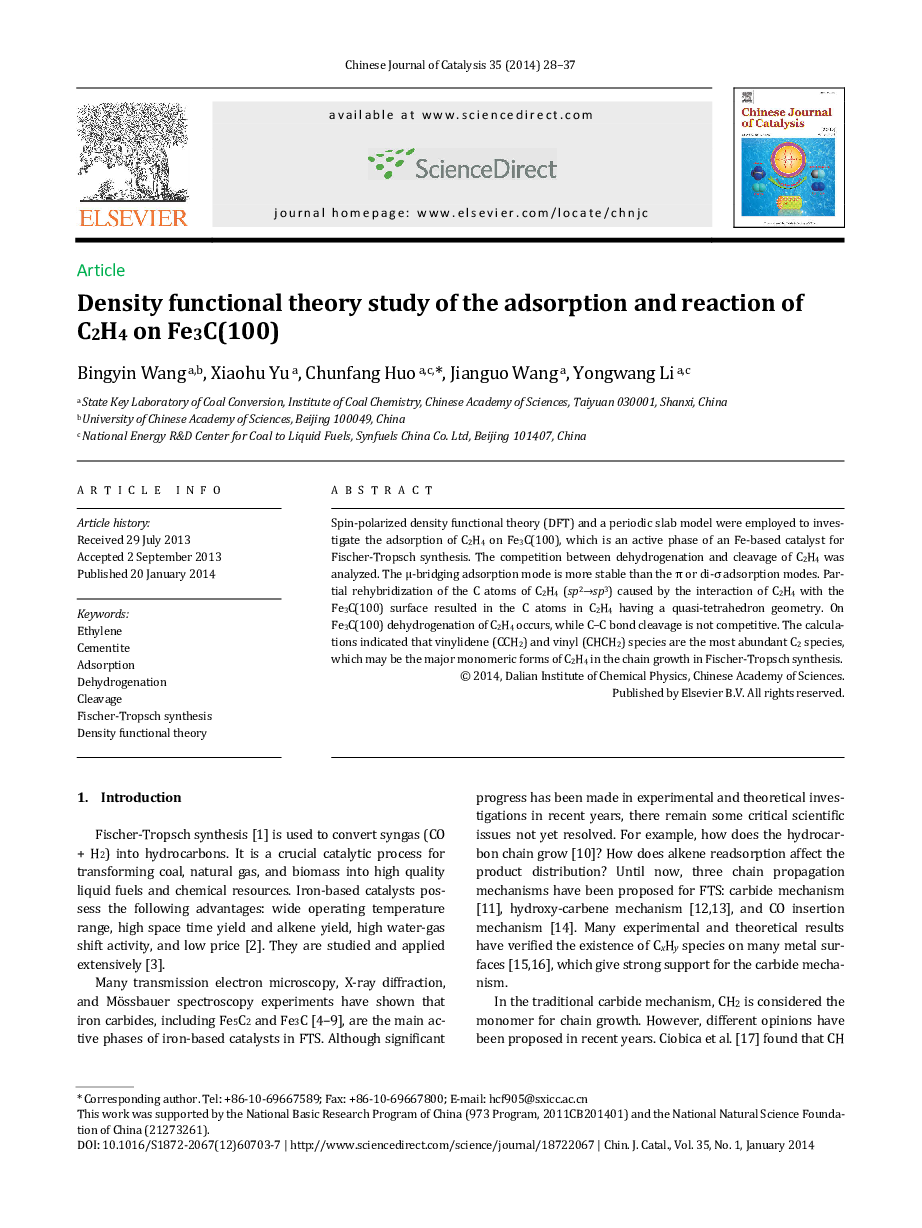| Article ID | Journal | Published Year | Pages | File Type |
|---|---|---|---|---|
| 59448 | Chinese Journal of Catalysis | 2014 | 10 Pages |
Spin-polarized density functional theory (DFT) and a periodic slab model were employed to investigate the adsorption of C2H4 on Fe3C(100), which is an active phase of an Fe-based catalyst for Fischer-Tropsch synthesis. The competition between dehydrogenation and cleavage of C2H4 was analyzed. The μ-bridging adsorption mode is more stable than the π or di-σ adsorption modes. Partial rehybridization of the C atoms of C2H4 (sp2→sp3) caused by the interaction of C2H4 with the Fe3C(100) surface resulted in the C atoms in C2H4 having a quasi-tetrahedron geometry. On Fe3C(100) dehydrogenation of C2H4 occurs, while C-C bond cleavage is not competitive. The calculations indicated that vinylidene (CCH2) and vinyl (CHCH2) species are the most abundant C2 species, which may be the major monomeric forms of C2H4 in the chain growth in Fischer-Tropsch synthesis
Graphical AbstractDFT calculations indicate that on Fe3C(100), C2H4 favors dehydrogenation reaction, while the C-C cleavage is not competitive. Vinylidene (CCH2) and vinyl (CHCH2) are the most abundant.Figure optionsDownload full-size imageDownload as PowerPoint slide
